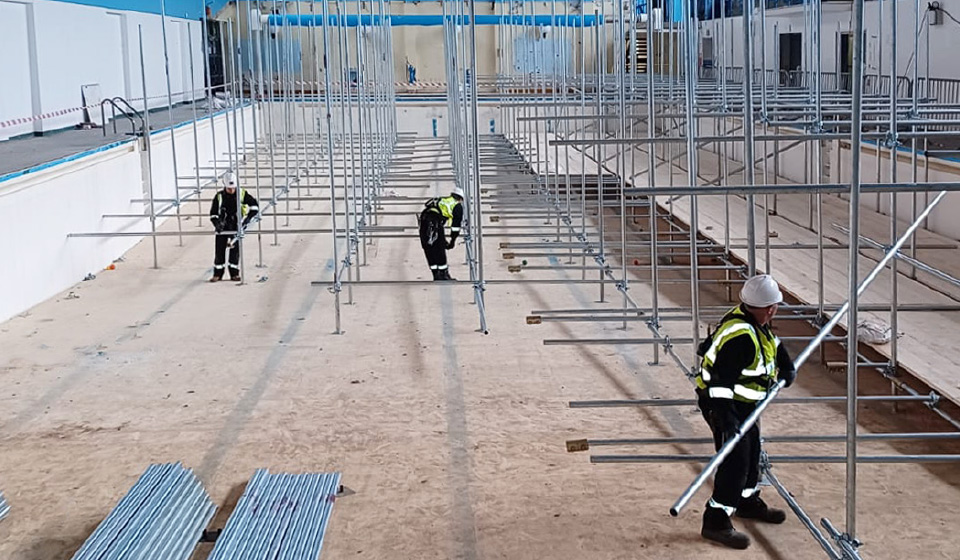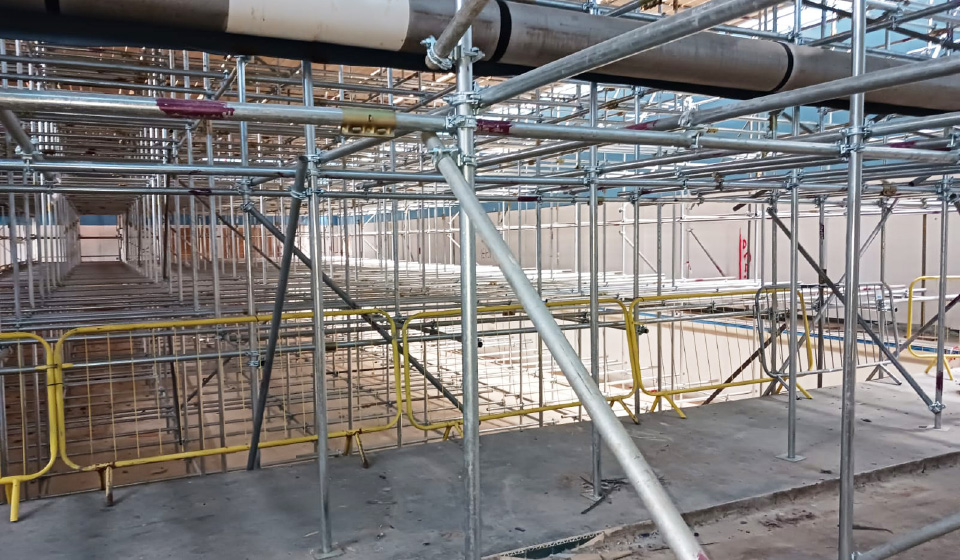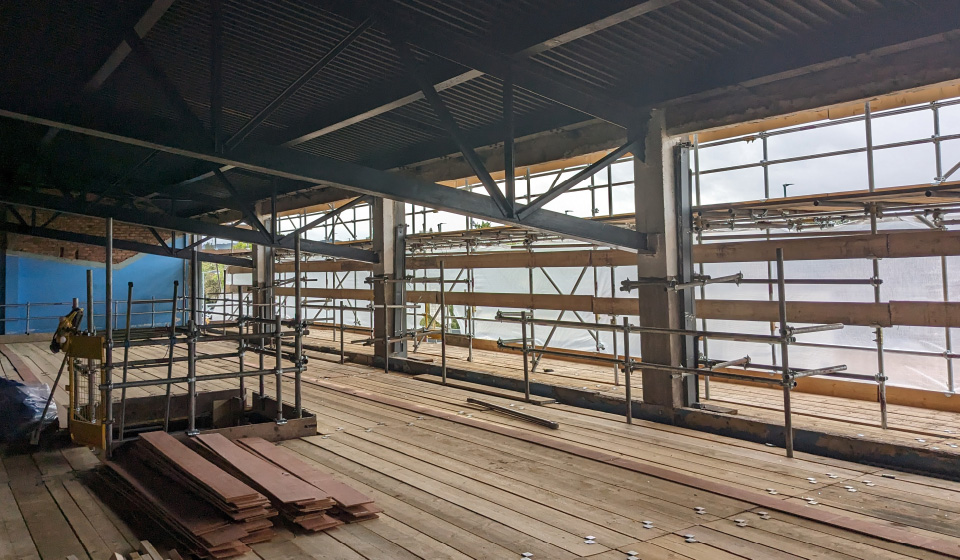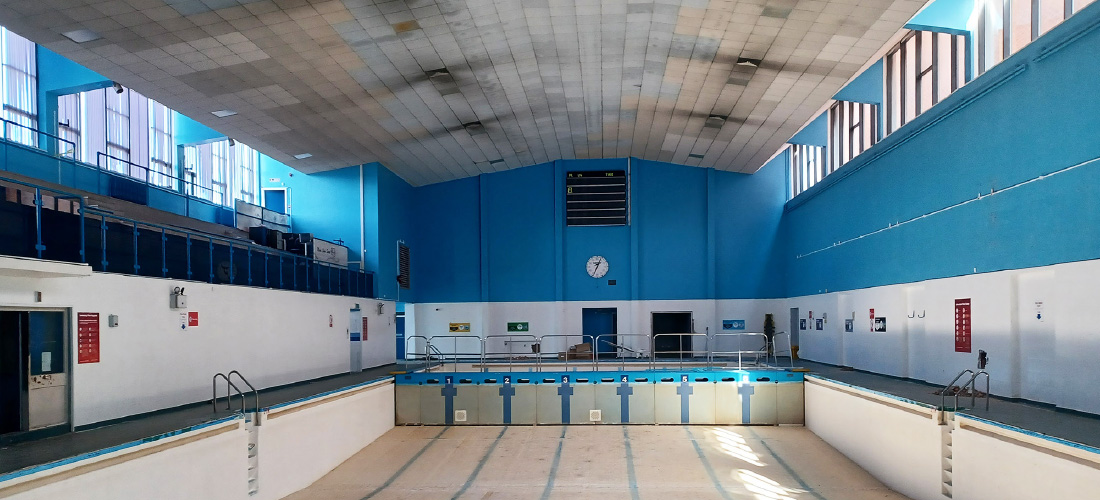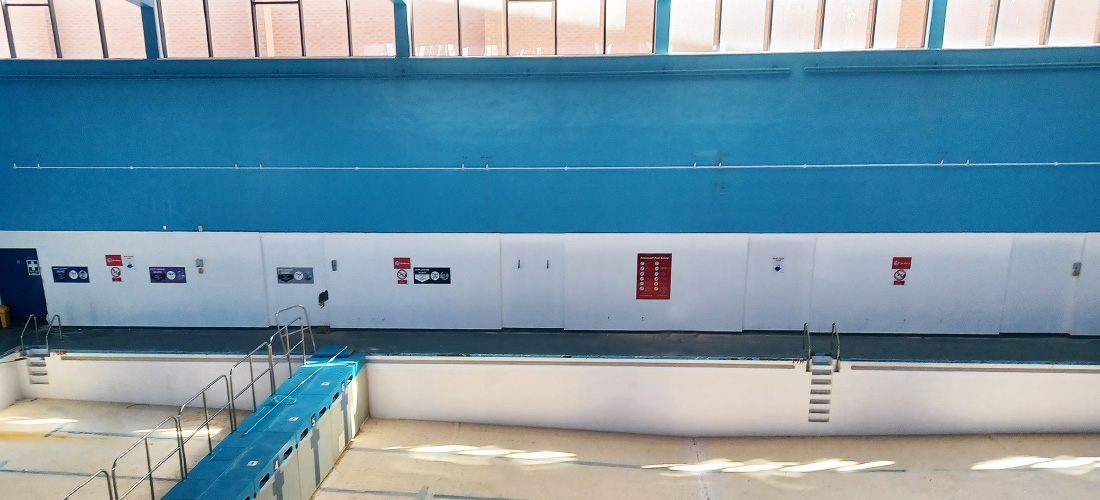Eston Leisure Centre
In 2020, Redcar & Cleveland Council announced plans to construct a new swimming pool facility at the Eston Leisure Centre. The new facilities would replace the existing pools, which were deemed to be beyond repair.
The upcoming swimming facilities aim to exceed standard building regulations concerning ecological impact and carbon footprint. This project emphasises environmental sustainability by integrating advanced technologies, such as solar panels, air source heat pumps, substantial insulation, high-quality glazing, and state-of-the-art pool filtration systems, to create a modern, eco-friendly facility.
To pave the way for this new development, the existing pool buildings were safely demolished. However, during the initial project planning stages, a demolition survey uncovered materials containing asbestos in the building. So, due to the associated hazards with asbestos, it was necessary for the main contractor to engage with a competent access provider who was licensed to provide scaffolding to areas where it was foreseeable that the activity was likely to disturb the asbestos.
Enigma, holding an ancillary asbestos license issued by the HSE (Health and Safety Executive), was appointed by Thompson’s of Prudhoe, working on behalf of the principal contractor, Wilmott Dixon, to ensure safe access within the complex. The scaffold structure erected by Enigma enabled the Licensed Asbestos Removal Contractor to safely remove the asbestos, allowing for the subsequent demolition of the building.
This redevelopment project marks a significant step towards providing a state-of-the-art, environmentally conscious leisure facility for the local community.
Project Summary
To support the client’s project, birdcages were required internally to access the roof ceiling and external perimeter scaffolds were erected to roof level. Then all scaffold configurations were stabilised using a combination of butting to internal walls, and anchoring to the external façade and structural concrete columns using Apollo screws. The external scaffolds were fitted with Monarflex sheeting on the top 2-lifts to provide an encapsulated area for asbestos works.
Large Pool
A birdcage approximately 20m x 42m and 8m high was installed in the larger pool building and stabilised by butting to the internal walls on all four sides of the scaffold structure. Then the top lift was fully boarded to enable the client to use mobile alloy towers to access the ceiling and roof trusses. The external east elevation was built through an existing roof that needed demolishing, and suitable tie locations were limited. Therefore, we opted for ties to the concrete columns supplemented with plan bracing to form a rigid structure. The west elevation was tied similarly to the east elevation but benefited from a larger brick façade area for anchoring purposes. On this elevation, a bespoke loading bay was designed and built, with access to the scaffold provided via a HAKI staircase. The northwest elevation spanned over the smaller pool building roof using 750 X-Beams, with all external scaffolds extended upwards beyond the roofline to create a sheeted, encapsulated area for asbestos works.
Smaller Pool
In the smaller pool building, an internal birdcage approximately 10m x 19m and 5m high was installed and stabilised by butting into the internal walls on all four sides of the scaffold structure. Then external tube and fitting scaffolds were erected on the north and south elevations and extended upwards beyond the roofline to create a sheeted, encapsulated area for asbestos works.
Asbestos Removal
In accordance with the requirements under Enigma’s ancillary asbestos license, the project delivery was subject to a detailed Plan of Works, an essential component in ensuring the safe and compliant management of asbestos during removal, encapsulation, or other related activities. The Plan of Works information is collated in collaboration with Subject Matter Experts (SME’s), and is a critical document in ensuring that asbestos-related activities are carried out safely, legally, and in a well-organised manner. The documentation is a proactive tool for protecting human health and the environment by minimising the risks associated with asbestos exposure.
The key purposes of a Plan of Works in the context of asbestos management are:
Safety: Helping ensure the safety of workers and the public by outlining the specific procedures and precautions that will be undertaken to prevent asbestos exposure and contamination during the project.
Compliance: Ensuring compliance with relevant regulations and guidelines for asbestos management, including the Control of Asbestos Regulations (CAR) in the UK.
Organisation: Providing a structured and systematic approach to the asbestos work, including details on how the work will be conducted, the equipment and materials to be used, and the personnel involved.
Communication: Serving as a communication tool between the licensed contractor, the client, and any other relevant parties (e.g., regulators, building occupants, stakeholders) to ensure everyone is aware of the project’s scope, timeline, and safety measures.
Risk Assessment: Identifies, and assesses the risks associated with the asbestos work and outlines risk mitigation strategies and contingency plans in case of unforeseen issues.
Record-Keeping: Facilitating a comprehensive record of the asbestos work, which can be valuable for future reference, audits, or any potential legal or regulatory requirements.
Efficiency: Enabling effective planning and organising of the work to help reduce downtime, minimise costs, and ensure the project is completed on schedule.
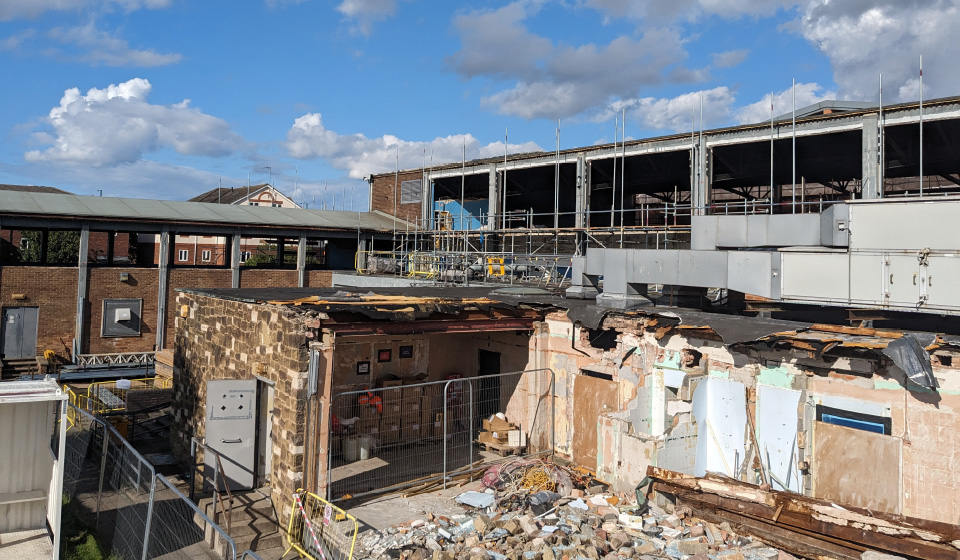
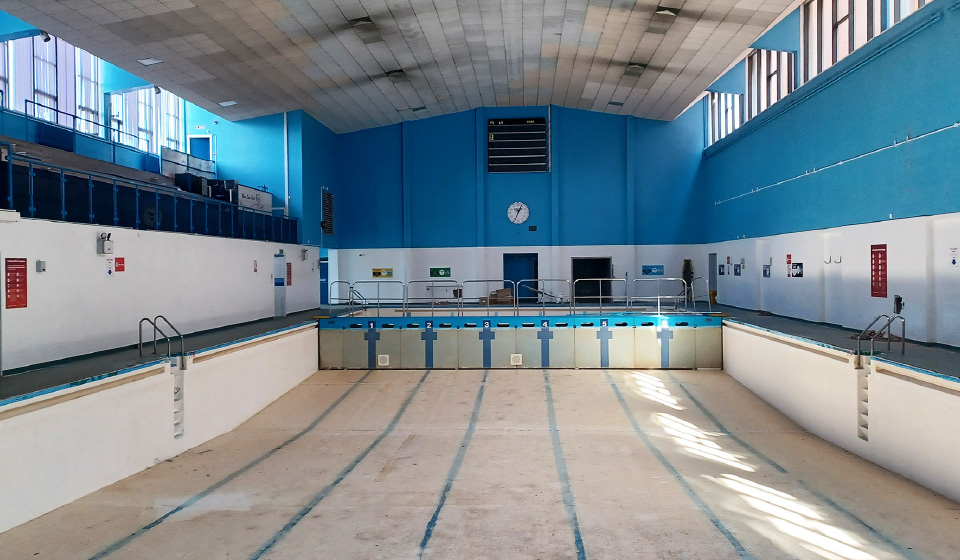
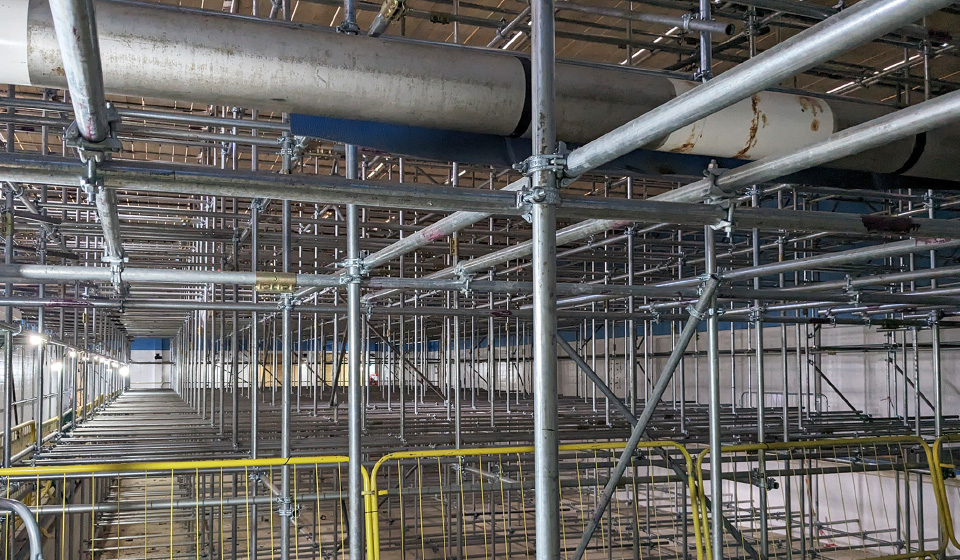
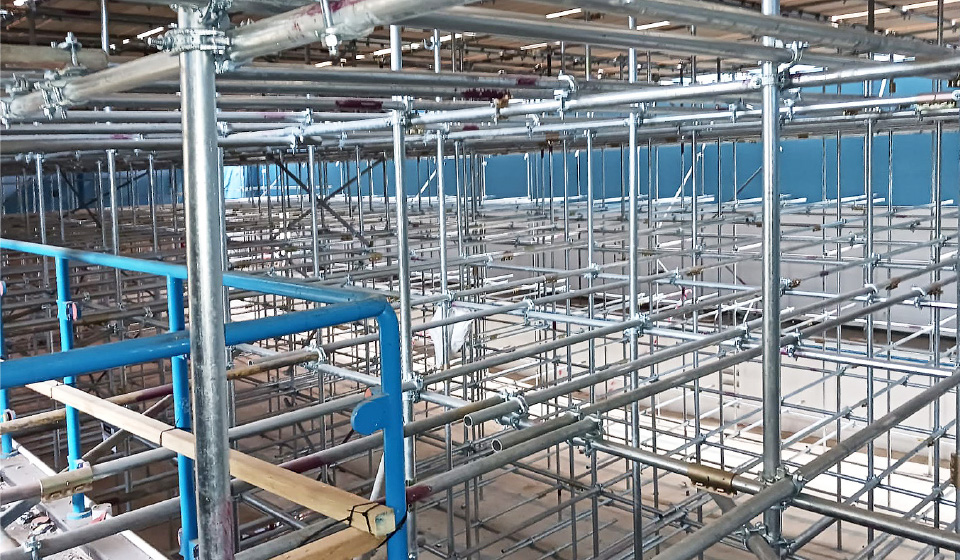
Value Engineering
To support the overall successful delivery of the project, Enigma worked collaboratively with the Principal Contractor to develop innovative solutions to deliver the project requirements.
In-house Design & Engineering Service – The project required a dynamic approach, with Enigma having to be reactive to the shifting needs of the scaffold access provision. The higher areas of the larger pool building had limited tie locations as the facades consisted of large glass panels, meaning typical TG20 tie patterns could not be used. To overcome this challenge, the scaffold structure was designed to be anchored to the concrete columns that stood at 6m centres. The lifts anchored to columns were plan braced, and ledgers were spliced to provide the adequate rigidity needed for the scaffold frame. Also, tensile tie loads exceeded the allowable load for a single 12mm Apollo screw, resulting in the design dictating double ties be installed on the top lift.
Given the significant weight that the scaffolds imposed on the ground (up to 17kn/m2 vertically), Enigma’s in-house Design Engineers worked with the client’s Project Delivery Team and Structural Engineers to ensure that the infrastructure could support the imposed loads, especially over areas that had hidden voids. The commitment to safety was shared by all stakeholders, and the project was safely delivered with over 6,500 hours delivered by Enigma without any first aid treatments or lost-time incidents.
Material Management – One of the key challenges was managing the delivery of over 600 tonnes of scaffold material within a small lay-down area. Our internal Operations Team sequenced the erection phase of the project meticulously with a ‘just in time’ delivery system to minimise the congestion. By splitting the erection sequence into over 40 planned phases, Enigma arranged weekly material deliveries for the specific works undertaken that particular week. This approach substantially reduced the amount of material movement using forklift trucks while mitigating a significant amount of manual handling.
Quality Service – ‘Right First Time’ Initiative.
During the delivery of the project, Enigma was subjected to two unannounced third-party inspections by a scaffold SME (Subject Matter Expert) in collaboration with the Principal Contractor. Both site inspections were positive, with the inspector commending Enigma and the scaffolders operating on-site for their standard of work, highlighting the consistent delivery of industry best practices.
Enigma is proud to support projects that benefit local communities. The construction of the new multi-million-pound swimming pool facility will enhance the current leisure centre facilities available to residents living throughout the surrounding area.
